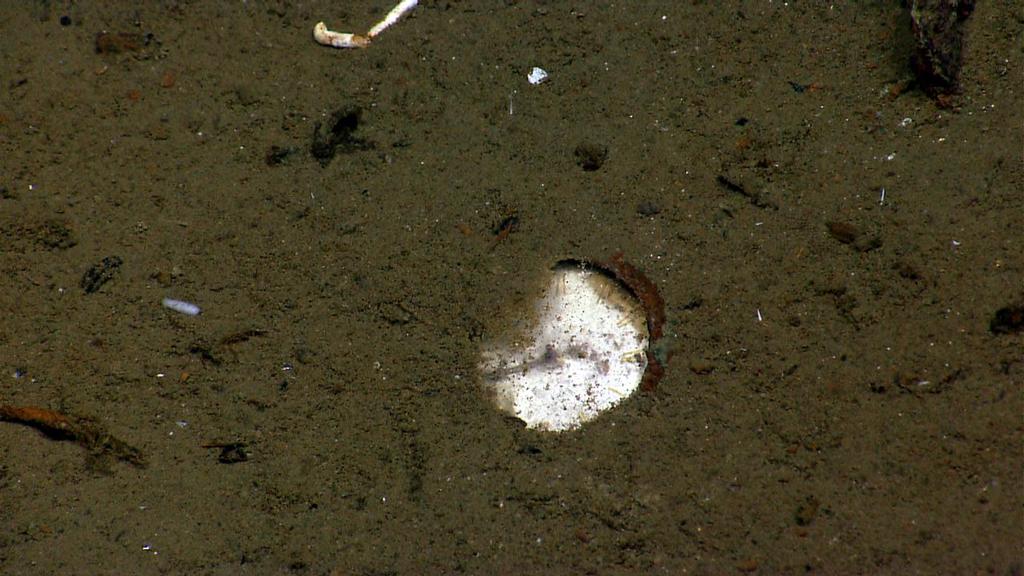NOAA expedition discovers ship’s timepiece silent for nearly 200 years
by NOAA Research on 2 Sep 2014

NOAA and partners, operating undersea robots with cameras, discovered this chronometer hiding beneath the sediment at the bottom of the Gulf of Mexico. NOAA .
http://www.noaanews.noaa.gov/
Using undersea robots, a team of NOAA-led marine archeologists discovered a ship’s chronometer where time has stood still for about 200 years at the bottom of the Gulf of Mexico.
This was the latest discovery made as part of the Gulf of Mexico expedition by NOAA Ship Okeanos Explorer.
On April 17, pilots aboard NOAA Ship Okeanos Explorer guided camera-laden undersea robots, called remotely operated vehicles (ROVs), over the seafloor 200 miles off Galveston, Texas, as scientists at sea and ashore directed the cameras to comb the remains of a shipwreck, believed to be from the early 1800s.
From an Exploration Command Center in Silver Spring, Maryland, Frank Cantelas, a marine archaeologist with NOAA’s Office of Ocean Exploration and Research, spotted a partly buried circular object on the live video. Cantelas, his colleague James Delgado, director of maritime heritage in NOAA’s Office of National Marine Sanctuaries, and other scientists were commenting on views of a ship’s octant – a navigator’s measuring instrument -- that was nearly buried in sediment except for its mirrors. Suddenly Cantelas spotted this other object a few feet away. When the ROV’s cameras zeroed in, scientists were amazed to see the ancient timepiece. An expedition a year ago had missed the ship’s chronometer.
'Do you see a dial, and a hand inside the circle as well,' Delgado asked the team that day. As the camera zoomed in, a scientist in Galveston added, 'You can see Roman numerals.' The chronometer’s hand appeared to be pointing to 6:30.
In an Exploration Command Center at Stennis Space Center in Mississippi, Jack Irion, a regional historic preservation officer with the Bureau of Ocean Energy Management, said the chronometer’s discovery was rare and significant. While other evidence from the wreck suggests the ship predates 1825, it was unusual for merchant ships to have such an expensive instrument. 'For this to appear on a merchant ship in the Gulf of Mexico at this early date is extraordinary,' he said.
A British carpenter perfected the design for the chronometer in 1761 -- a clock that could keep accurate time on a rolling ship at sea, so that sailors could determine their position by measuring the angle of the sun relative to high noon in Greenwich, England. The devices were so expensive initially that few ships carried them. It wasn't until 1825 that British Royal Navy ships carried chronometers.
'This chronometer is an object worthy of scientific recovery, preservation treatment to reverse the corrosive effects of two centuries in the sea, detailed study and eventually, display in a museum,' said Delgado.
Some scientists conjectured that if sailors survived a crisis at sea, they would have taken the valuable chronometer with them, leading scientists to theorize there may have been no survivors.
NOAA explores the largely unknown ocean to obtain baseline information that is vital to informing decisions by ocean resource managers and policy makers. This includes investigating shipwrecks to determine if they may be significant national maritime heritage sites. Such sites require not only study, but protection in partnership with industry and other federal partners.
The Office of Ocean Exploration and Research in the National Oceanic and Atmospheric Administration (NOAA), an agency in the Department of Commerce, is leading the expedition in partnership with the Bureau of Ocean Energy Management (BOEM) and the Bureau of Safety and Environmental Enforcement (BSEE), both in the Department of the Interior; The Meadows Center for Water and the Environment at Texas State University; the Texas Historical Commission; and the Maryland Historical NOAA Research website
If you want to link to this article then please use this URL: www.sail-world.com/126215